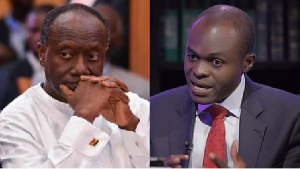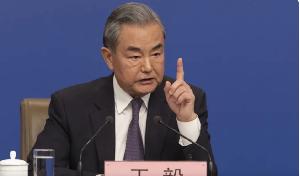Operation 2012 – Calculations In The Choice Of Running Mates For Presidential Candidates
Since the election of Nana Akuffo Addo as the NPP’s Presidential Candidate for elections 2012, the media has been agog with campaigns and counters on who should be selected as his Vice Presidential Candidate. Names have come up, and a lot has been said in favor of one candidate or the other. This article is not meant to support the candidature of any particular individual. It is meant to provide a dispassionate analysis of the calculations that ought to inform the NPP and for that matter any other political party still to decide on running mates for their presidential tickets, on what needs to be taken into account in choosing the mix of people that can be a winsome team. In particular, the article focuses on the question of regional balance in the choice of the Presidential Candidate and the Vice for any party’s ticket.
The article also makes a deliberate choice not to focus on other factors such as religion and gender because while the religious argument has been discredited several times over since 1992, we as a nation seem to have a fundamental problem of ensuring gender balance in our political structure. The percentage of women in our parliament has been shrinking since 1992, and the representation of women in District Assemblies is equally miserable. We tried presidential tickets with female candidates before, but they did not pull the female votes as the parties had expected. It requires a different set of analysis to understand why focusing on a female Vice Presidential Candidate, or for that matter Presidential Candidate will not be a winsome proposition at this point in time in our political evolution.
The argument for the regional balance starts with the obvious. In their wisdom, the crafters of the 1992 Constitution required a regional balance in the appointment of public officers (Article 35 Clause 6b) and in the composition and running of political parties that seek to govern this country (Articles 55 (4) and (7). Therefore the choice of any combination of Presidential and Vice Presidential Candidates that does not ensure a regional balance will not be satisfying these constitutional requirements. Of course, regional balance has and can always be interpreted to mean simply having the two paired candidates coming from different administrative regions, as we had in the case of the NDC in the 1992 and 1996 elections. However, the spirit of the constitution in requesting regional balance rests in the need to ensure that people of all parts of the country, especially those from less resourced and developed parts of the country, can see that they are present and are part of the policy formulation and decision making processes at the highest level of the state, which is the Presidency and the cabinet.
Hence, if we are to take this injunction of the constitution seriously, the interpretation of the requirement for a regional balance will have to go beyond the mere switch in administrative regions lying within the same agro-ecological and economic zones. In other words, having a Presidential candidate from the Upper East Region and his or her Vice from the Upper West or Northern Regions will not represent a regional balance; just as having similar arrangements for candidates in the southern sector of the country will fail the test. Presidential candidates and their political parties must therefore actively seek to achieve the regional balance mandated by the constitution in ways that ensure the north-south inclusivity. Otherwise, they would be failing the spirit of the constitution.
Beyond the constitutional requirement, a Vice Presidential Candidate under our constitution becomes a President-in-waiting once elected, as we have witnessed in the case of Nigeria. Therefore, respecting the regional balance must go beyond tokenism. In other words, the Presidential candidate owes it a duty to the citizens of Ghana to select a running mate who can effectively take over the reins of government should the President be unable to perform those functions for whatever reason. Hence, not only must the Vice Presidential candidate be technically competent, he or she must also be politically experienced and able to lead the country at the wink of an eye. In reality, if the public and civil services are functioning as they should, we don’t really need someone who is just a technocrat as Vice or potential president. What we need is a politically savvy person who can pick the baton of managing the affairs of the state and run with it without scratching his head in helplessness when confronted with taking up this role on the wink.
But to be a Vice president, there is a precondition. The candidate must, first of all, be able to help the Presidential candidate and the party win the elections. Hence, apart from technical competence in performing the duties of the President should he or she not be available, one of the major considerations for choosing a Vice Presidential Candidate is the political capital he or she brings to the ticket of the main candidate. Against this background, presidential candidates need to go beyond sentimentalism and use evidence-based criteria in making the choice of a Vice Presidential candidate. In this respect, let us take the liberty of contributing to the discussion on NPP’s choice of Vice Presidential candidate by looking at the evidence that peers at us.
By accident, Ghana’s 52+ ethnic groups have their populations concentrated around different regions. Hence, regional balance also means taking into account ethnic balance in the allocation of positions as the constitution demands. Beyond that, the ethnic concentration of populations around certain geographical areas also sets boundaries for electoral success of political parties; a phenomenon that has become known as the electoral “world banks” in Ghanaian political parlance. But as the results for the previous elections have shown, these world banks are not inexhaustible sources of votes. On the contrary, they have their elastic limits in how much any one political party claiming ownership of such banks can expect to harvests votes from them. A couple of examples here would suffice.
The Ashanti Region is presumed to be the electoral “World Bank” of the NPP. In the 2008 round one elections, of the total of 1,652,584 votes cast for the presidential candidates of the NPP and the NDC in the Ashanti Region, the NPP Candidate obtained 1,214,350 votes representing 73.5% of the total for the two candidates in that region. This percentage for the NPP candidate reflects trends for previous elections where the NPP has consistently done better than the NDC in the Ashanti Region. But it also shows that the NPP has literally reached its elastic limits of the votes it can expect from the Ashanti Region in any one election. This is because starting from a 60.51% gain in 1992, the party’s presidential candidates in subsequent elections successfully raised its share of the votes in the region to its highest limit of 79.89% in the 2000 runoff. From that point, it dipped slightly to 74.61% in 2004 and further to 72.40% in the first round of the 2008 elections before climbing back slightly to 74.99% in the 2008 round off. They have not been able to take it to the 80%+ mark.
Second round elections usually provide opportunities for the two leading parties to show their strengths and capabilities to marshal uncommitted votes from the other non-contesting parties or floating voters. However, the two previous two-round elections have shown that the ability of the NPP to marshal extra votes from its stronghold – i.e. the Akan speaking regions of Ashanti, Central and Eastern Region is very limited. Indeed, the marginal increases in votes between rounds one and 2 elections in 2000 and 2008 have consistently been less than 10%. In 2000, the difference between the round 1 and 2 votes gained by the NPP in Ashanti was only 5.16%. In 2008, the difference between the round 1 and 2 in the same region was a mere 2.59%. Similar trends are observable in other Akan regions i.e. Eastern and Central regions. In the 2000 elections, the round 2 votes for the NPP were only 7.4% higher than the round one votes in the Eastern Region. In the 2008 elections, only a 0.39% change was registered between the rounds one and two votes for the party in that region. For the Central Region, the change in votes between rounds 1 and 2 was 10.63% while the 2008 difference between the two rounds was only 0.23%
Implications
The foregoing show that the NPP may have marshaled all the votes it could in Ashanti, Central, and Eastern Regions by the time it went into the first round of the 2008. While the Ashanti region seems to have come to its exhaustible limits at 79%, the Eastern Region seems to have maxed out at 60.47% with the Central Region being able to provide a maximum of 60.31% for the NPP in any two way votes.
This means that at best, the NPP can expect to push its share of votes in all three regions to not more than another 5%. While this could be enough to overturn the 40,000 vote deficit that gave the presidency away to the NDC in the 2008 runoff, the fact that the NPP could not easily move from a 49% share of the first round votes to a 50% + 1 vote in the second round demonstrates how it is statistically much harder to increase one votes in areas where the elastic limits are reached. In other words, there was little else to mop up from its world bank and its branches by the time it went into the second round in 2008.
For the purposes of our discussions on the permutation of candidates for the Presidential and Vice Presidential slots, the foregoing clearly shows that a South-South combination will go strongly against the NPP for two reasons. An Akan-Akan combination from the Ashanti, Eastern, and Central Regions will not push the NPP too far beyond the 74% limit in Ashanti, 60.47% in Eastern or 60.31% in Central. An Akan-Volta combination will not yield much either since the Voltarian vote has consistently been less than 15% for the NPP; having risen from its lowest of 3.61% in 1992 to its highest of 14.98% in the 2008 runoff.
So what options does a Presidential candidate of the NPP have for getting a VP that will bring in some votes? The pointers go to the Upper East and the Upper West Regions, both of which have shown considerable flexibility and willingness to accommodate the NPP. From a low of 10.48% of votes to the NPP Candidate in 1992, the Upper East Region showed large incremental jumps from then on to reach its maximum of 42.83% in the 2000 round 2 elections before sliding back to 31.66% in 2004 and 35.25% and 34.4% in the rounds 1 and 2 of the 2008 elections. The Upper West, on the other hand started from as low as 8.9% in 1992, and gradually hiked up to 38.03% in the 2000 round up, and then 32.23% in 2004. It came back to 37.72 and 37.67% in the rounds 1 and 2 respectively of the 2008 elections. The Northern Region showed similar trends, starting from 16.3% in 1992 and maxing at 48.9% in the round 2 of the 2000 elections before sliding to 38.36% in the round 2 of 2008.
Of the three northern regions, however, the Upper West showed the greatest leap of faith in the NPP when it raised its votes from 15.51% in the round 1 of 2000 to 38.03% in the round 2 and has since then kept it within the 30% bracket, with an end of 2008 round 2 vote of 37.67%. The Upper East came in close in showing increasing faith in the NPP with a 21.37% change between the rounds 1 and 2 in 2000, and a 2008 round 2 percentage votes of 34.4% for the NPP’s Presidential Candidate. The Northern Region had a 19.34% difference between rounds 1 and 2 in 2000, with a 2008 round 2 closing rate of 38.36%.
Someone is bound to be quick to point out that in terms of absolute numbers the three northern regions have little impact on the overall electoral process, given their relatively smaller total populations. That argument would be ignoring the reality of the migration patterns in this country. Of all groups in the country, the people of the three northern regions have the highest outmigration rates. Take the case of the Upper West Region, which has the highest outmigration rates in the north, and arguably in the whole country. A look at Table 4 of the 2000 Housing and Population Census, which provides data on ethnic groups of Ghanaians by birth and by region should be revealing. Of the 980,997 Ghanaians counted in the census who indicated that they belonged to one of the three major ethnic groups in the Upper West (Dagaaba, Walba, and Sisaala), 488,400 of them representing 50.2% lived outside the region at the time.
By region of location of Upper Westerners living outside their region, the Brong Ahafo Region had 168,434 or 34.5% of Upper Westerners living outside their region as of the night of the census in 2000. The Northern Region had106,416 mainly in the Sawla, Bole, and Damongo areas, while the Ashanti Region had 85,529 Upper Westerners located that region. The Western Region had, 43,363, Greater Accra, 39,454, and Eastern Region, 21,445 for the same period.
When one adds the figures of the domestic diasporans from the other two northern regions to what obtains from the Upper West Region, it should be easier to see how and why voting patterns in the southern sector can be diluted, making it difficult, for instance, for the Akan factor in Ashanti to reach beyond the 74% ceiling without mobilizing and bringing in voters from the domestic diasporan community in that region.
I am aware this analysis will draw the prompt accusation of some people that the article is inciting ethnicity as the basis of elections. Of course, we can always choose to play the ostrich and pretend that ethnicity is not a factor in our voting patterns. It is beyond the scope of this article to debunk such pretenses. However, anyone with a little interest in statistics can see clearly through the results of the most recent elections that we are simply deceiving ourselves, if we refuse to recognize that ethnic and for that matter regional affiliations remain very strong factors in our national electoral behaviors. In fact, if anything, communities in the three northern regions are the most de-ethnicized in their voting patterns than others. But that does not mean that they are not aware that this pattern is playing to the advantage of others.
Finally, it is noteworthy that even with the skirt and blouse options of voting, the number of votes a Presidential candidate gets in any constituency closely match the performance of the party’s parliamentary candidate in that constituency. But more importantly, it is essential to note that results of the two previous elections that went into runoffs suggest that voter sympathy in the second round tends to go to the party that has the highest number of parliamentary seats in the first round. This was the case in 2000 and 2008. Hence, the number of parliamentary seats that a party can rally in the first round will be crucially important to its success at the presidential level. By extension, any presidential candidate who is serious about winning should be looking for a Vice who can marshal support for his or her party to win parliamentary seats not only in his or her constituency of origin, but across a wider network of constituencies. To ignore this in the calculations on who becomes the running mate of a Presidential candidate is a risk not worth taking.
Let then the parties and their Presidential candidates decide.
By: Hippolyt Pul,
Political Observer
Opinions of Monday, 23 August 2010
Columnist: Hippolyt Pul














